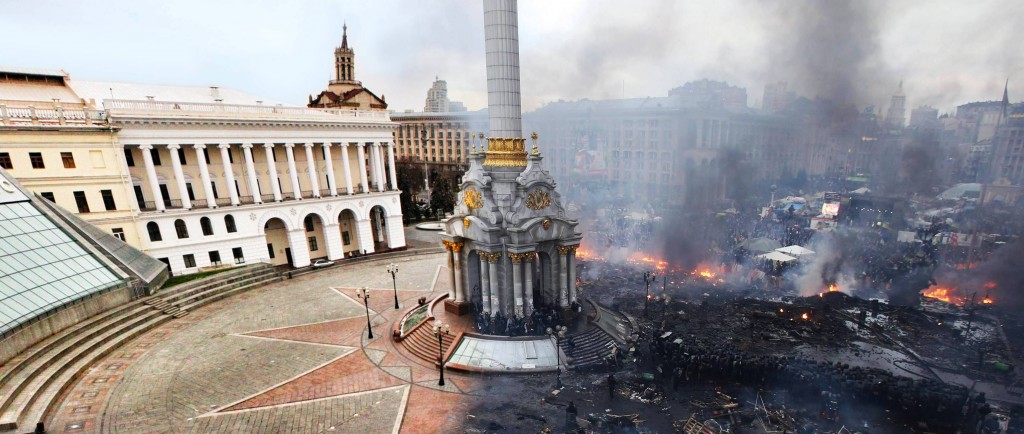In Kiev, Ukraine, black smoke from burning tires show the line between protesters and police. Each side stands strong to their beliefs of what will be best for their country, and neither shows any sign of yielding. The threat of civil war is a growing problem, and in a world where the government is holding a strong arm over its people, this could be the first outbreak in Europe.
The Ukrainian city of Kiev, protests, riots, and a general unrest are going into their third month. The event, beginning as small demonstration and now spreading to a national scale, began in November of 2013 when Ukrainian president Viktor Yanukovych decided to turn an offer to join the European Union (EU) in favor of closer ties with Russia.
The peaceful protests erupted into full scale riots on January 19th when 200,000 protesters clashed with police. The violence increased on February 18th as 20 people were killed when riot police stormed a protester’s camp in Independence Square, Kiev. Among the dead were citizens and police alike, bringing the death toll to 25.
In the latest and bloodiest clash between the opposing forces, violence erupted on February 20th during a truce and peace talks, claiming the lives of at least 100 people (according to CNN and BBC reports), leaving approximately 500 injured. The official government numbers said that a total of 75 people were killed, while protesters estimated upwards of 125.
The reason for the start of the most recent bloodshed is unknown with both sides blaming the other. President Yanukovych said in a statement that the violence was “provoked exclusively by the opposition leaders,” and that they were following police while throwing rocks and molotov cocktails.
On the other side, one opposition doctor said the government was using professional snipers and “shooting to kill.” This statement is not confirmed or refuted at this time.
The trigger that turned the protests into riots was a set of new laws, passed by Prime Minister Mykola Azarov, restricting citizens’ rights to peaceful protest. Although Azarov has since resigned (as of January 28th), violence is occurring in Kiev and the rest of the Ukraine, and protesters say that peace will not be fully achieved until President Yanukovych steps down and new elections are held.
On Friday, February 21st, a deal was signed between the protesters and the government and an agreement for a possible peace was achieved. The deal calls for the government to revert back to an old version of the constitution in which the president’s powers would be more limited and a reinstitution of a parliament must be created, within 48 hours.
The full transformation, according to the deal, must be finished by September. The deal also calls for new presidential elections to be held as soon as the new constitution is adopted, but no later than December of this year. Police must draw back from “confrontational posture” and use violence only when “defending public buildings.” The protesters must draw back from any streets or public buildings that they have occupied and turn in illegal weapons.
While both sides are hopeful for peace, all earlier truces have either erupted into violence, or failed to reach an agreement. While this is the farthest they have come toward peace, both sides believe there is a long way to go before the nation recovers.



